Solo Travel Posts on Crowch
From May 13 to 24, 2025, the French Riviera will once again become the world capital of cinema. The Cannes Film Festival, one of the most respected and influential in the world, will bring together directors, actors, producers, critics, and thousands of cinema lovers from across the globe. For over 75 years, it has shaped the direction of global filmmaking, and its awards remain among the most prestigious in the industry.
Why Cannes Still Leads the Way
The festival was founded in 1946 as an independent space for cinema, free from political influence. Since then, it has become an international platform where mainstream, arthouse, and debut films from the most unexpected places intersect.
The festival's top prize, the Palme d’Or, has been awarded to filmmakers like Fellini, Tarkovsky, Kusturica, Kore-eda, and Triet. Winning it means writing your name into the history of cinema.
What to Expect in 2025

The Cannes program traditionally includes several main sections: the Official Competition, Un Certain Regard, Short Films, Cannes Classics, and Out of Competition screenings. This year’s edition is expected to feature increased focus on:
- Debut films from young directors across Asia, the Middle East, and Latin America
- Topics like digital identity, artificial intelligence, and cultural memory
- Experimental and immersive formats such as VR and 360-degree cinema
In 2025, the festival will also expand its initiatives promoting women filmmakers and creators from the Global South.
Running alongside the festival is the Marché du Film, the world’s largest film industry marketplace. With over 12,000 professionals attending, it’s where deals are made, premieres are arranged, and future global releases are born.

Glamour and Art: A Delicate Balance
While much of the media attention focuses on the red carpet, gowns, and celebrities, Cannes remains a tightly organized professional event. Access to screenings is highly regulated through accreditation, and film selection involves a rigorous process overseen by industry experts.
The main events take place at the Palais des Festivals on the Croisette promenade. In the evenings, the city transforms: open-air screenings, networking events, masterclasses, and premieres create an atmosphere of creative energy and intellectual celebration.
Why Cannes Still Matters
The Cannes Film Festival is not just a place to screen films — it's a reflection of global cultural currents. At a time when streaming platforms are reshaping the film industry and consumption habits are changing rapidly, Cannes stands as a symbol of cinema as an art form, a dialogue, and a cultural mission.
For directors, it's a stage to be discovered. For critics, a place to capture trends. For audiences, a chance to see first what the world will be talking about next.
Renting a campervan in Europe means freedom to move, sleep anywhere, and explore without limits. It’s especially popular in countries like Iceland, Norway, France, Portugal, Spain, and Germany. A camper gives you full control over your route, lets you avoid hotel bookings, and helps you discover hidden places far from crowds.
To rent, you typically need a standard driver’s license (Category B) and be at least 23 years old. Some companies allow younger drivers for an extra fee. Basic insurance is usually included, but full coverage with no excess is highly recommended. Deposits range from €500 to €1500 and are held on your card.
Modern motorhomes are well equipped: beds, kitchenette, toilet, shower, and heating. It’s a mobile home with everything you need. Keep in mind that wild camping is not legal everywhere. In Scandinavia or Scotland it’s allowed with restrictions; in Germany, France, or Italy, you’ll need to stay at designated areas or campsites.
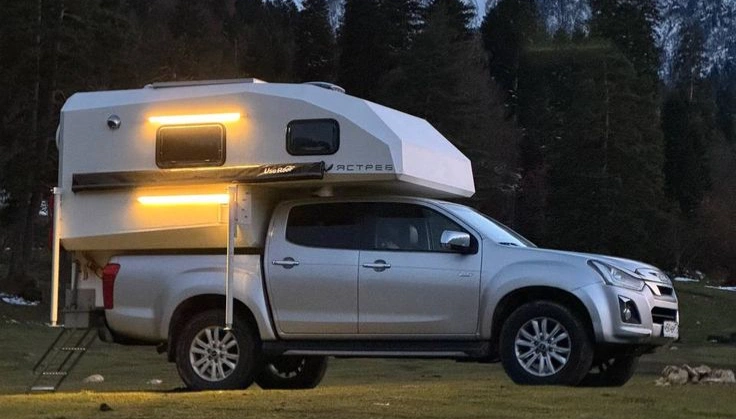
Costs include daily rental (€60–140), diesel fuel, gas bottles for cooking, and campsites (€10–30 per night). Some countries also offer free or low-cost overnight parking. Use apps like Park4Night, Campercontact, or Google Maps to find the best places to stay.

Book in advance, especially in summer. Reliable platforms include Yescapa (peer-to-peer), Indie Campers (across 15+ countries), McRent, Anywhere Campers, and Localrent (good for Eastern Europe and the Caucasus).
A campervan isn’t just a vehicle — it’s a way of travel. You wake up by a lake, cook breakfast in the forest, fall asleep by the sea. If you love independence, slow travel, and the rhythm of the road, this is your perfect adventure.
Traveling across Europe doesn’t have to be expensive. Thanks to low-cost airlines, you can fly between countries for less than the price of a restaurant meal. Tickets from €10–20 are real — if you know where, when, and how to book them.
Low-cost carriers reduce prices by removing extras. A standard ticket doesn’t include checked luggage, meals, or seat selection. Everything is optional and comes at an extra fee. But in return, you get access to extremely cheap fares, especially if you book early.
Some of the most popular budget airlines in Europe are Ryanair, Wizz Air, easyJet, Vueling, Transavia, Eurowings, and Norwegian. Each has its own focus: Ryanair flies widely across the continent including to smaller airports, Wizz Air targets Central and Eastern Europe, and easyJet focuses more on domestic routes in France, Germany, Italy, and the UK.
To save money, book 4–6 weeks in advance. The cheapest tickets often appear on weekdays, especially Tuesday and Wednesday. Use flight comparison tools like Skyscanner, Momondo, or Google Flights to find deals — but book directly on the airline’s website to avoid hidden fees and access exclusive offers.
Be aware that most low-cost carriers limit free cabin luggage. Usually, you’re only allowed a small bag (about 40×25×20 cm) that fits under the seat. Standard cabin bags or checked luggage must be paid for separately. Also, check the airport you’re flying from — Ryanair, for example, often uses secondary airports located far outside the city, which may add time and cost to your journey.
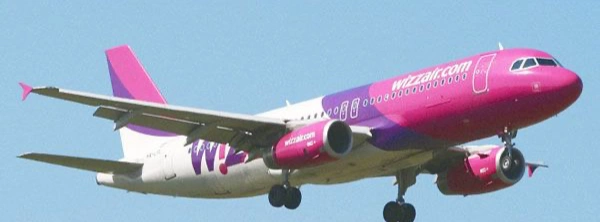
Extra fees can also apply to things like seat selection, priority boarding, an additional personal item, or even printing your boarding pass at the airport. Always read the fare rules before purchasing to avoid surprises.
That said, with a smart approach, low-cost airlines are a fantastic way to explore Europe. For example, a route like Berlin – Budapest – Milan – Barcelona – Paris can cost just €60–80 total if booked a month or two in advance. These prices make travel accessible even for students or those planning spontaneous weekend trips.
Flying with low-cost carriers is all about flexibility and attention to detail. Packing light, bringing your own snacks, and flying at less convenient hours can save a lot. But if you’re prepared for this, Europe becomes more affordable — and closer — than you ever expected.
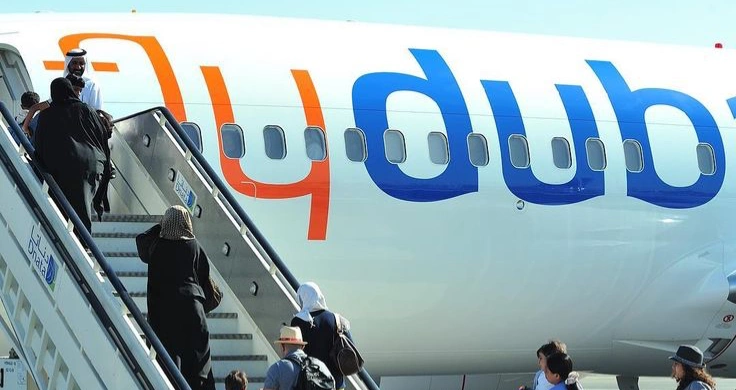
Carpooling and Rideshares
BlaBlaCar is Europe’s leading rideshare platform. It connects drivers with passengers on similar routes:
- Cheaper than trains and often faster
- Great for meeting locals and discovering off-the-beaten-path places
- Available in countries like France, Spain, Germany, Italy, and Poland
Tip: Check user ratings and verify details before booking a ride.
5. Urban Transport: Getting Around Cities
- Most European cities have excellent public transport (metro, trams, buses)
- Use apps like Moovit, Citymapper, or Transit for real-time directions
- Many cities offer daily or weekly passes that save money over single tickets
- For short distances, try shared e-scooters (Tier, Lime, Bolt) or bike rentals
Tip: In smaller cities, walking is often the best (and most enjoyable) way to explore.
6. Ferries and Boats
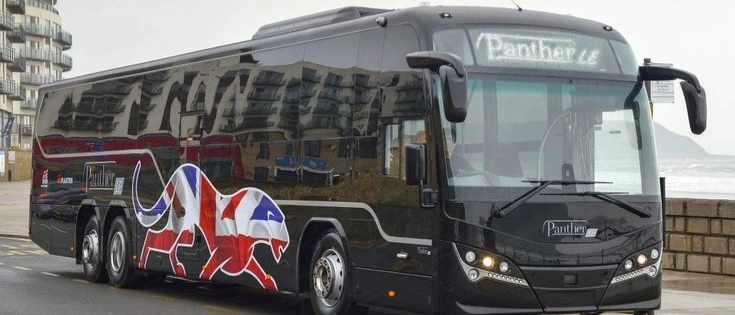
In countries like Greece, Italy, Croatia, and Scandinavia, ferries are essential:
- Book tickets for inter-island or coastal travel through Direct Ferries, Ferryhopper, or local operators
- Ferries may be slower than flights but offer a scenic and relaxing experience
- Some night ferries include cabins — saving on hotels
Final Thoughts
Traveling across Europe doesn’t have to be expensive. With dozens of transportation options — from budget flights and buses to trains and ferries — you can build a route that fits your schedule and your wallet. The key is to plan ahead, stay flexible, and always compare options.
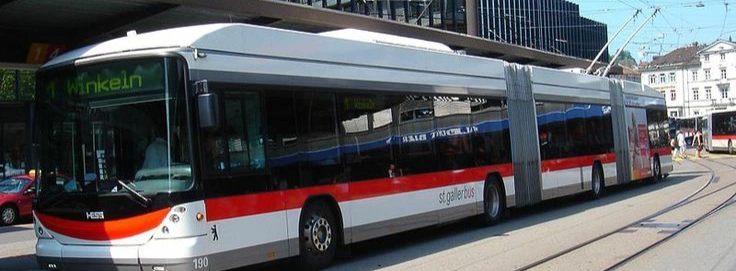
Whether you’re backpacking for a month or taking a quick weekend escape, smart transport choices will help you go further, see more, and spend less.
Affordable Transportation
Start with budget airlines like Ryanair, Wizz Air, and easyJet. Flights between cities often cost less than €20 if booked in advance. To keep it cheap, travel light (carry-on only), avoid seat selection and extras, and be flexible with travel dates.
For land travel, buses and regional trains are cost-effective. FlixBus, BlaBlaCar Bus, and RegioJet offer routes across dozens of countries. Overnight buses help save both time and money on accommodation. If you're planning multiple train journeys, consider an Interrail (for EU citizens) or Eurail (non-EU) pass — it can reduce per-trip costs and simplify travel.
Budget Accommodation
Accommodation is one of the largest travel expenses, but there are ways to save:
- Hostels are ideal for solo travelers and backpackers, often starting at €10–15 per night.
- Airbnb or private rentals can be cheaper for couples or small groups.
- Couchsurfing is completely free and offers a local perspective.
- University dormitories, available in summer, offer basic but affordable short-term stays.
Always compare prices across Booking.com, Hostelworld, and Airbnb for the best value.
Food and Dining
To eat well and stay on budget:
- Buy groceries from local supermarkets or visit markets for fresh food — most hostels and rentals have kitchens.
- Many restaurants in Central and Eastern Europe offer lunch menus for €5–7.
- Street food is popular, filling, and usually inexpensive (try döner in Berlin, zapiekanka in Krakow, or crêpes in Paris).
- Tap water is safe to drink in most European countries — carry a reusable bottle.
Free and Low-Cost Experiences

Europe is full of beauty and culture that doesn’t cost a thing:
- Join free walking tours in cities like Prague, Barcelona, or Budapest — just tip the guide.
- Museums and galleries often offer free entry once a month or on certain days.
- Explore national parks, city gardens, riversides, and historical neighborhoods for free.
- Attend local markets or festivals — they offer a cultural experience with no admission fee.
Stay Connected Cheaply
Avoid roaming fees with a regional eSIM plan. Providers like Airalo, Holafly, and Nomad offer data-only plans covering most European countries.
- Activate in minutes via QR code
- Plans start around €4–5
- No need to change physical SIMs in every country
- Perfect for using maps, translators, and booking apps on the go
Final Tips for Budget Travelers
- Travel in shoulder seasons (spring and fall) to get lower prices and fewer crowds
- Be flexible with routes and dates to catch the best deals
- Use apps like Rome2Rio, Omio, or Skyscanner for transport planning
- Track your spending with tools like TravelSpend or Trail Wallet
- Pack smart — extra baggage fees can ruin your budget
Conclusion

Перезагрузить файл
Traveling in Europe on a budget is not only possible — it’s one of the most rewarding ways to explore. You’ll meet more locals, take more interesting routes, and often experience destinations more authentically. With smart planning, affordable travel becomes not just realistic, but deeply enjoyable.

💧 Water, Water Everywhere—But None to Drink
Imagine drifting in the middle of the ocean. The sun is merciless, your throat is dry, your lips crack with every breath. You're surrounded by infinite water, but drinking it would only hasten your death. This was the haunting reality for sailors for centuries.
Until the 19th century, even the grandest ships couldn’t carry enough fresh water for months-long voyages. Seafarers had to rely on ingenuity, strict rationing, and sometimes sheer luck to survive. Why was rum a survival tool, not just a pleasure? How could rain feel like salvation? And what desperate measures did crews take to squeeze drinkable water from the sea?

🪙 Fresh Water Was Liquid Gold
On sailing ships, water was more valuable than gold. Every drop mattered. A sailor was typically allowed less than 1.1 liters per day—for drinking, cooking, washing wounds, and maybe washing their face.
Water was stored in oak barrels placed low in the hull to help balance the ship. But even the best wood couldn’t preserve freshness for long. Within two weeks, water often turned murky, foul-smelling, and tasted like stagnant swamps. And yet—they still drank it. There was no alternative.
During critical shortages, daily rations were cut in half—or more. Desperation turned dirty water into a grim necessity.

⚗️ Silver, Spirits, and Survival
Though unaware of microbes, sailors were not without cleverness. To slow spoilage, they dropped silver coins or scrap metal into barrels—an early, crude form of sanitization. Modern science confirms silver’s antibacterial properties, though it sometimes caused rashes, nausea, or eye irritation.
Another trick? Alcohol. Adding rum or brandy to barrels didn’t just mask bad taste—it killed bacteria. This mix, often called “medicinal blend,” was the difference between life and a slow death by dysentery.
🍹 Grog: The Double-Edged Sword
British sailors were issued half a pint of rum daily. To curb drunkenness, it was diluted with water, birthing a concoction known as grog.
Paradoxically, grog worsened dehydration. But for many, a sip of diluted alcohol was a comfort amid agony. When water supplies ran low, rum became the final hope for liquid survival.
It didn’t save lives in the long term—but it gave courage to face another day.

🌧️ Rain: A Gift From the Heavens
Rain meant salvation. Sailors quickly adapted to “catching the sky.” Canvas sheets, sails, or even upside-down masts were repurposed to funnel rain into barrels. In tropical waters, a single storm could fill dozens of containers.
Diaries from the era speak of euphoric joy during downpours—dancing, singing, even crying. Ships sometimes sailed toward storm clouds, risking lightning and waves for a chance at freshwater. Rain wasn’t just weather—it was deliverance.

🪤 Rotten Barrels and Unseen Dangers
Barrels often spoiled from within. Worms, mold, algae, and sometimes rats or dead birds contaminated supplies. Entire compartments had to be dumped overboard.
Crews scrubbed barrels with brushes and vinegar, sometimes boiling them on shore. But in hot climates, even clean barrels could rot quickly. Water loss through leaking barrels into the bilge was common—and contaminated the ship’s lowest deck with dangerous filth.
🔥 Early Desalination: Not Quite a Miracle
Technically, seawater could be turned into fresh water. As early as the 16th century, sailors experimented with crude desalination devices—boiling seawater and capturing the steam. But early models were unreliable, produced tiny amounts, and often broke down.
By the 18th century, British and Spanish ships began carrying such devices on long voyages, and later—solar stills. But cloudy skies and technical flaws meant these were rarely dependable.
🇮🇷 Iran: Land of the Aryans
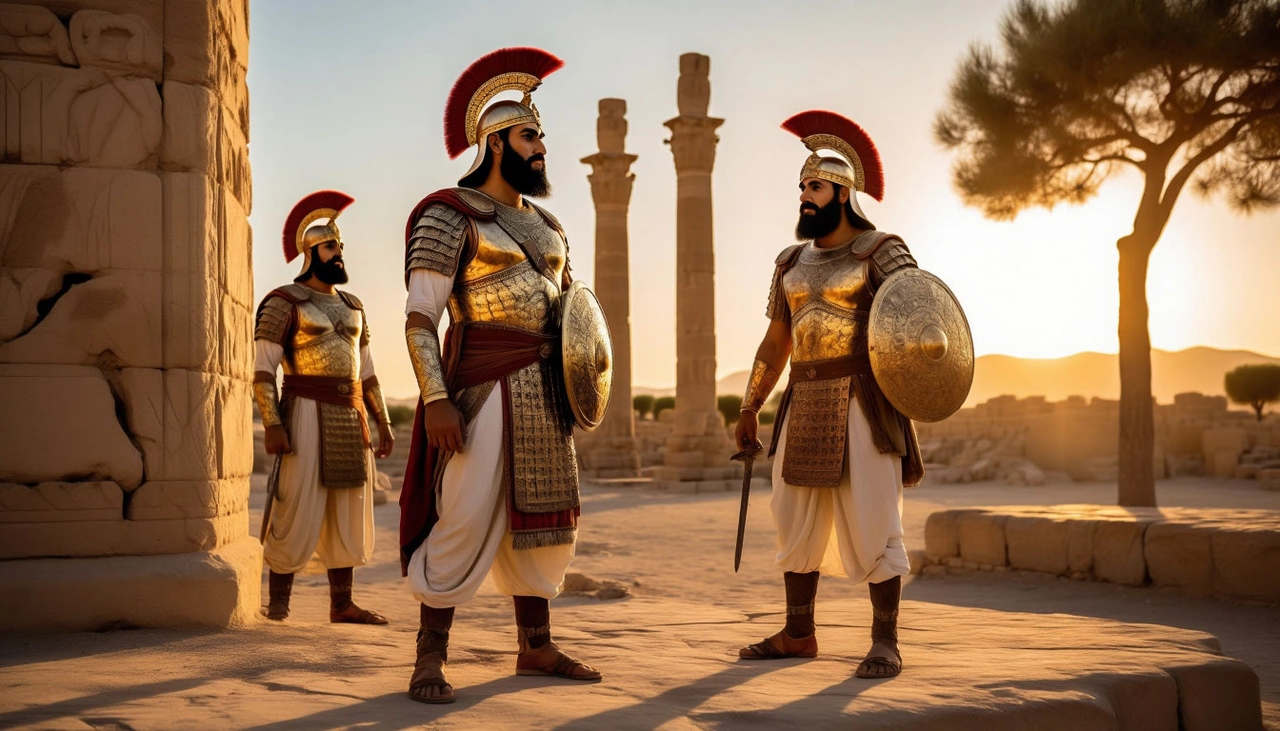
Despite frequent confusion with Iraq, Iran is a world apart — culturally, linguistically, and historically. Unlike its Arab neighbors, Iran is not an Arab nation. The majority of its population are Persians who speak Farsi, a language belonging to the Indo-European family. This linguistic distinction alone points to ancient origins.
The name Iran derives from the word Aryana, which translates to "land of the Aryans." The Aryans were ancient Indo-European tribes believed to have migrated south from the steppes of Central Asia, including areas that are now Kazakhstan and southern Russia. These tribes later laid the foundations for the great civilizations of Persia and India.
Until 1935, the country was known internationally as Persia — a name derived from the region of Pars (modern-day Fars), the cradle of the Achaemenid Empire. But that year, Reza Shah Pahlavi requested the international community to use the local name "Iran" to emphasize the nation’s deep historical roots and unity.
Today, the name Iran continues to reflect its mythological and historical identity — a reminder of Zoroastrianism, epic poetry like Ferdowsi’s Shahnameh, and a civilization at the heart of the crossroads between East and West.
🇮🇶 Iraq: Shoreline of Civilizations

Iraq — though often geopolitically entangled with Iran — carries a legacy of its own, dating back to the dawn of civilization. This is the land of Mesopotamia, the "land between rivers," where the Sumerians, Akkadians, Babylonians, and Assyrians changed the world by inventing the wheel, writing, and city-states.
The Arabic word al-‘Irāq likely stems from a term meaning "shore" or "lowlands," referring to the fertile riverbanks contrasting the surrounding deserts. During the early Islamic era, the name encompassed a larger region that included both Arab and Persian lands.
Baghdad, the capital, rose to intellectual prominence under the Abbasid Caliphate, drawing scholars from across the Islamic world. Thinkers like Al-Khwarizmi and Avicenna studied here, turning Iraq into a hub of science, philosophy, and medicine.
Thus, Iraq is more than a name. It's a riverbank soaked in the history of humanity — a place where myth, empire, and knowledge met in a unique and lasting legacy.
🇪🇬 Egypt: Land of the Black Soil and Soul of Ptah

Modern minds associate Egypt with pyramids, pharaohs, and the Sphinx. But the name "Egypt" masks deeper cultural layers. The ancient Egyptians called their land Ta-Kemet, or "Black Land," referencing the dark, nutrient-rich soil deposited by the Nile’s annual floods — a stark contrast to the surrounding Ta-Deshret or "Red Land" desert.
Later, in Coptic Christian tradition, the name Kemet persisted. But after the Arab conquest in the 7th century, a new name took root: Misr. In Arabic, it denotes not only a nation but a well-settled, civilized area — a place of order amidst nomadic chaos. Misr also carries significant meaning in Islamic texts, often symbolizing civilization itself.
Meanwhile, the Western name Egypt stems from the ancient Greek Aigyptos, a distorted version of the ancient phrase Hut-Ka-Ptah — “Home of the Soul of Ptah.” Originally, this referred specifically to Memphis, one of the oldest and most sacred cities of ancient Egypt.
Today, Egypt stands as a country with three coexisting names — Ta-Kemet, Misr, and Egypt — each telling a different chapter of a 5,000-year-old story.
Swimming Is Not an Innate Skill — It’s Learned and Culturally Shaped 🏊♂️
Swimming, contrary to popular belief, is not a natural ability inherent to all humans. It’s a learned skill that depends heavily on opportunity, environment, and cultural motivation. Historically, swimming was primarily necessary for specific professions—fishermen, sailors, and soldiers. For most people, especially before the 20th century, swimming was rare and often non-essential.
In Western countries, the culture of recreational swimming developed alongside growing wealth, paid holidays, and the rise of beach tourism, starting in the early 20th century. In contrast, East Asian countries like China, Japan, and Korea embraced this cultural shift much later or only partially.

Rice Farming Societies: Labor Intensity Leaves Little Room for Leisure 🌾
The economies and societies of China, Korea, and Japan have been deeply influenced by rice agriculture. Unlike wheat, rice cultivation demands meticulous, labor-intensive care involving careful water management and strict timing. Any delay or mistake can result in crop failure. Consequently, work rhythms in these societies have historically been relentless, with minimal breaks and few days off.
Even today, in urban environments, working hours are long, overtime is the norm, and vacation time is often sacrificed for career advancement. Leisure activities like swimming, which require time, relaxation, and a break from routine, often don’t fit into this demanding lifestyle.

Leisure Time Was a Luxury for Generations ⏳
Japan’s economic boom only really took off after World War II, gaining momentum in the 1970s. Korea’s rise began mostly in the 1990s, while China’s rapid urbanization and income growth started around the early 2000s. This means mass access to leisure, including swimming, arrived very recently—within a generation or two.
Meanwhile, Western societies have enjoyed widespread access to pools and beaches for nearly a century, embedding swimming deeply into their culture. In many East Asian families, swimming is not viewed as a necessary or expected skill, and many parents don’t prioritize teaching their children.

Geography and Climate: Not Always Swimming-Friendly 🏔️🌧️
Despite the long coastlines, the natural environment of East Asia doesn’t always invite swimming. Japan and South Korea are mountainous countries with short, cold, fast rivers—far from the calm, warm waters ideal for swimming lessons. These rivers are noisy, shallow, and unpredictable, discouraging recreational use.
The seas bordering these countries, especially the Pacific coast, are often turbulent. Strong tides, currents, and sudden weather changes are common, along with frequent typhoons and storms, creating real dangers at the beach.
China’s terrain is more varied, but many rivers are muddy, prone to flooding, or surrounded by agricultural land, making easy and safe access to open water scarce. Moreover, winters in these countries are cold and long, shortening the swimming season to just a few months a year, further limiting regular practice.

Cultural Norms: Modesty, Shame, and Fear of Embarrassment 🙈
Cultural factors also play a crucial role. In many East Asian societies, social conformity and modesty are highly valued. The fear of standing out or being judged negatively often discourages people from trying activities where failure or awkwardness is visible.
Swimming involves exposure of the body and unfamiliar movements, which can trigger discomfort and embarrassment, especially for women. In Japan, for instance, many young women prefer to swim fully clothed or cover up extensively at the beach, which complicates swimming instruction and participation.

Current Reality: Basic Swimming Skills but Limited Confidence in Open Water 🌅
There is no precise data on swimming proficiency in these countries, but trends are clear. In Japan, nearly all children learn to swim in school pools, which are often shallow and designed more for water safety and comfort than mastering advanced swimming. Many adults can swim but prefer to stay close to the shore or avoid deep waters.
China’s situation varies by region. Urban children increasingly take swimming lessons at schools or private pools, but rural populations often lack access to facilities or safe natural water bodies, leaving many without swimming skills.
South Korea shows a similar pattern: swimming education exists, but it focuses on basic survival skills. Even confident swimmers tend to approach the ocean cautiously, frequently using life jackets or flotation devices.

Conclusion: A Complex Mix of History, Environment, and Culture 🎎🌏
The rarity of confident swimming among Japanese, Chinese, and Korean people isn’t due to an inherent inability but rather a combination of historical labor demands, environmental challenges, cultural values, and limited leisure time. The sea has traditionally been seen as a powerful, dangerous force rather than a place for recreation.
While urbanization and modernization have improved access to swimming lessons and pools, especially for younger generations, the cautious attitude toward open water remains strong. Even those who can swim often prefer to stay near the shore, driven not just by fear but by deeply ingrained habits and cultural norms.
For many of us, school geography lessons taught a simple fact: there are four oceans on Earth — the Arctic, Atlantic, Indian, and Pacific. However, on some maps, a fifth ocean appears — the Southern Ocean. This discrepancy has sparked ongoing debates reminiscent of whether Pluto should be considered a planet or not. So, what’s the truth? Is the Southern Ocean truly a separate and full-fledged ocean? Let’s dive into the history, geography, and politics behind this watery enigma and clarify how many oceans really cover our planet.
🌍 Historical Background: The Origin of the Ocean Count
The concept of an ocean as a distinct geographic entity goes back centuries. The first known classification separating a southern ocean was made by Dutch geographer Bernhard Varenius in 1650. However, this was more theoretical, as much of the southern waters surrounding Antarctica were unexplored and poorly understood at the time.
Back then, explorers noticed unique characteristics in these southern seas: stronger winds, icy waters, and the presence of glaciers — features that set these waters apart from other oceanic regions. Even today, the Southern Ocean is defined by the confluence of cold Antarctic currents with warmer waters from the Atlantic, Pacific, and Indian Oceans. This natural boundary shifts seasonally, which complicates drawing fixed borders.

🗺️ The Modern Debate and Official Recognition
Interest in the Southern Ocean’s official status reemerged strongly in the 20th century. It began in 1920 during discussions within the International Hydrographic Organization (IHO), which includes about 100 member countries. After long debates, the IHO decided to acknowledge the Southern Ocean and established provisional boundaries.
However, these boundaries were subject to frequent revision based on scientific discoveries and geopolitical considerations. Only at the dawn of the 21st century — in the year 2000 — did the IHO formally declare the division of the world’s waters into five oceans, including the Southern Ocean as a distinct entity.

❄️ The Southern Ocean in Facts and Figures
The Southern Ocean surrounds Antarctica, stretching roughly from the continent’s coast northwards to about the 60th parallel south latitude. It covers approximately 20.3 million square kilometers, making it the fourth largest ocean by area, after the Pacific, Atlantic, and Indian Oceans.
Its deepest point lies in the South Sandwich Trench, plunging down to about 8,264 meters. This ocean is home to unique wildlife such as emperor penguins, elephant seals, orcas, and Antarctic krill — a tiny crustacean that forms the foundation of the marine food web, feeding numerous fish, birds, and mammals.
One remarkable natural phenomenon here is the Antarctic Convergence, where cold Antarctic waters meet warmer waters from the north, creating nutrient-rich zones that support abundant marine life. Additionally, the Southern Ocean plays a crucial role in regulating global climate by circulating water masses that transfer heat and carbon dioxide between the poles and the equator.

⚖️ Why the Controversy Continues
In 2023, the IHO revisited the issue and formally approved a resolution confirming the Southern Ocean’s status and boundaries, recognizing its unique characteristics and significance.
However, this hasn’t ended all disputes. The IHO’s decisions require ratification by member states to become universally accepted, and not all countries have agreed. Some nations, including Russia, have ambiguous or inconsistent representations of the Southern Ocean on their maps — sometimes recognizing it, sometimes not.
This patchwork of perspectives means that globally, the Southern Ocean remains something of a cartographic Schrödinger’s cat — simultaneously acknowledged and denied, depending on where you look. The debate has lost much of its intensity in recent years but persists quietly, reflecting broader themes of national interests, scientific interpretation, and geopolitical nuances.

🌐 Conclusion: A Fluid Boundary in a Fluid World
The question “How many oceans are there on Earth?” does not have a simple, universally accepted answer. While five oceans are officially recognized by key scientific bodies, geopolitical realities mean that four remain the number many people know from schoolbooks.
Ultimately, the Southern Ocean represents more than just a body of water — it is a symbol of the dynamic and evolving nature of scientific knowledge, the intersection of geography and politics, and the complex way humanity relates to the natural world.
Nestled in the East China Sea just nine miles from the heart of Nagasaki, Japan, lies a small island with a story as compelling as it is tragic — Hashima Island, also known as Gunkanjima or “Battleship Island.” Its silhouette, resembling a massive warship encased in concrete walls, stands frozen in time, a ghostly remnant of an era long past. Today, Hashima is a deserted island, but only fifty years ago, it was one of the most densely inhabited places on Earth, bustling with life, industry, and hope.

⛏️ The Discovery That Changed Everything
Hashima’s story begins in 1810 when local fishermen stumbled upon rich coal deposits beneath its surface. Before that, the tiny island, spanning just 6.3 hectares (about 15.5 acres), was completely uninhabited and overlooked. This discovery would transform Hashima forever.
By 1887, the Fukahori clan had sunk the first coal mine shaft, and three years later, in 1890, the Mitsubishi Corporation purchased the island, rapidly industrializing it into a major coal mining center. The 20th century saw extensive construction: around thirty residential buildings, temples, schools, hospitals, over twenty shops, restaurants, and even swimming pools rose from the rocky island. Beneath the surface, deep coal shafts plunged 600 meters below the sea, fueling Japan's industrial revolution.

🏙️ The Pinnacle of Urban Density
By 1959, Hashima had reached the peak of its development. It became famous for having the highest population density in the world — an astonishing 139,100 people per square kilometer. Imagine an entire city crammed into less than seven hectares of land, where families lived in close quarters, children attended schools, and workers toiled day and night in the mines. Life on Hashima was intense, vibrant, and close-knit. Residents enjoyed amenities typical of larger cities: movie theaters, clubs, grocery stores, and social spaces where community life thrived. The island was a self-contained world of progress and modern living amid the relentless hustle of coal mining.
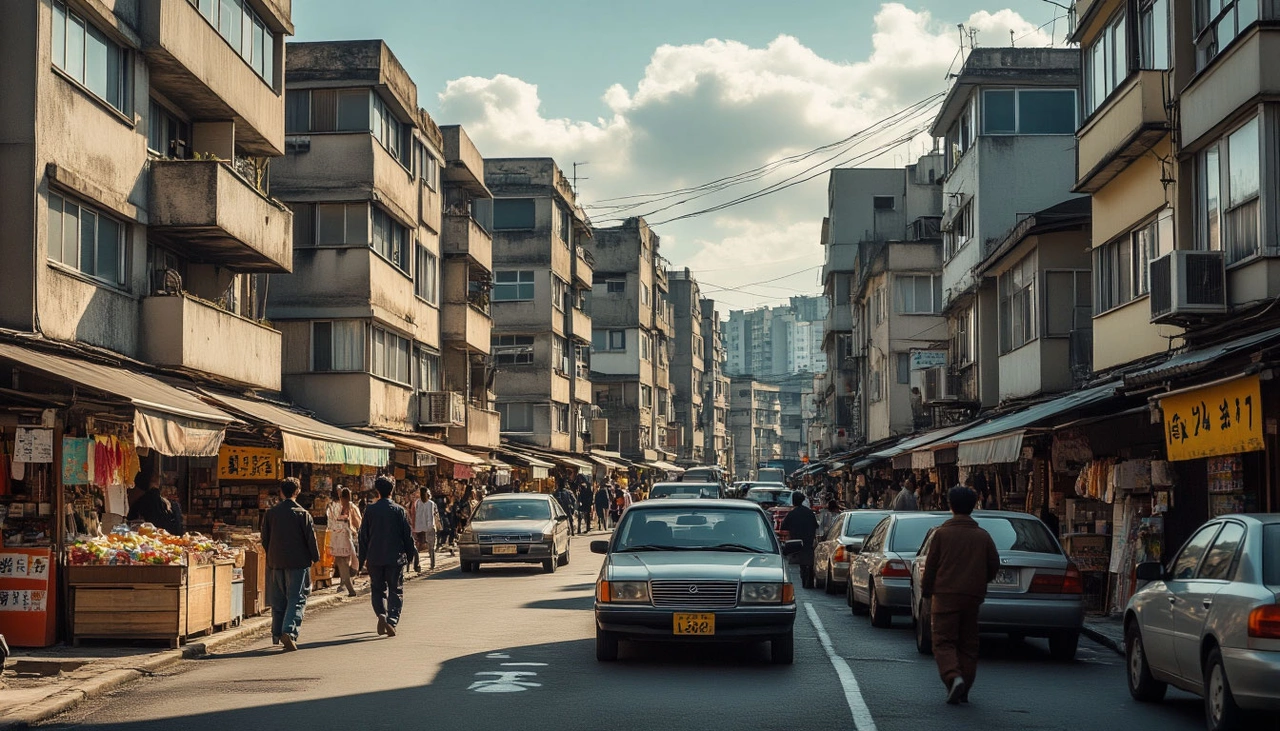
⚠️ The Dark Shadows Behind the Progress
However, beneath this thriving facade lay a grim reality. Between 1943 and 1945, during World War II, Mitsubishi used forced labor, bringing in hundreds of Chinese and Korean prisoners of war to work under brutal conditions. These laborers endured inhumane treatment, starvation, disease, and deadly working environments. Many lost their lives in the deep mines or harsh living quarters.
This tragic chapter remains a painful memory, especially for South Korea, which continues to seek justice and compensation for the survivors. The scars of these events turned Hashima into a symbol not only of Japan's industrial might but also of human suffering and exploitation.

🛢️ Decline and Desertion
By the late 1960s, coal lost its economic importance, overtaken by cheaper petroleum fuels. Mines across Japan began closing, and Hashima was no exception. In early 1974, Mitsubishi announced the shutdown of mining operations. By March, the local school closed, and in April, the last residents departed, leaving behind an eerie ghost town.
Homes, shops, and schools were abandoned, with personal belongings left scattered like memories frozen in time. In just a few weeks, the once-bustling island fell silent, swallowed by decay.

🏚️ Decay and Rediscovery
After the evacuation, Hashima was left to the elements. Concrete buildings, once symbols of progress and modernity, began crumbling under the relentless assault of wind, rain, and sea spray. Japan’s government restricted access to protect the island from vandalism, but nature’s reclaiming was unstoppable.
Only in 2009 were limited tours permitted, opening a small, secure area for visitors. This change marked the beginning of Hashima’s transformation into a historical site, a monument to Japan’s industrial past. In 2015, Hashima was added to the UNESCO World Heritage list, recognizing its significance as a relic of industrial history despite protests from South Korea regarding its painful legacy. Today, boats ferry tourists from Nagasaki daily, eager to witness the haunting ruins and imagine life on this “island of ghosts.”

🌿 The Fragility of Human Endeavor
Hashima Island’s story resonates far beyond its concrete ruins. It is a stark reminder of how human ambition can rise to incredible heights — and how quickly nature can reclaim what we abandon. The island draws photographers, historians, and urban explorers fascinated by its eerie beauty and powerful story.
In 2013, Google captured panoramic images of Hashima, making it accessible to anyone worldwide via virtual tours. This digital resurrection preserves the island’s haunting spirit, allowing future generations to reflect on both the triumphs and tragedies of industrial progress.
Final Thoughts
Hashima is more than a ghost town. It is a symbol of human resilience, industrial innovation, and the harsh realities of history. Its desolation speaks volumes about the costs of progress and the importance of remembering every chapter — even the painful ones. As we explore its ruins, we are reminded that every place has a story, and some stories demand to be heard.